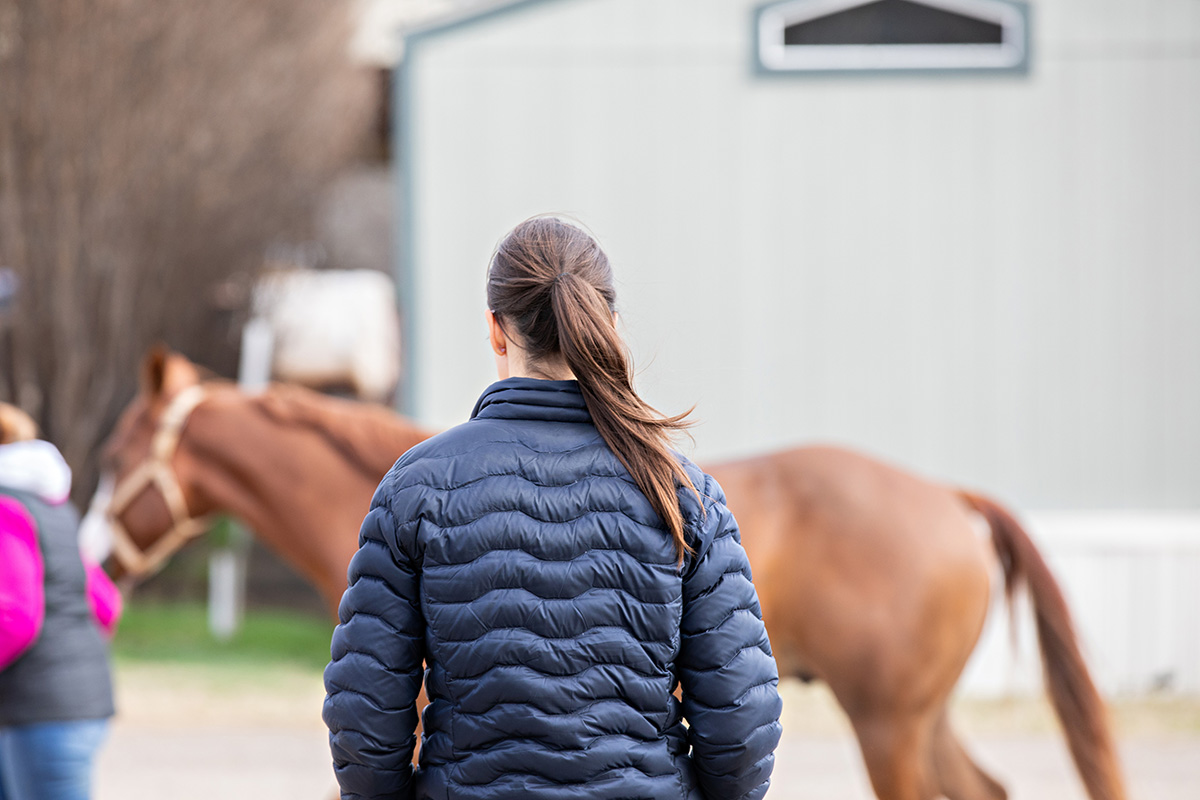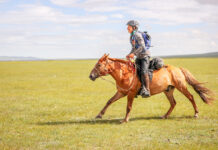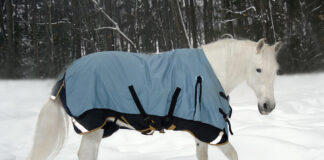If you’re planning on buying a new horse, check out which questions to ask and which red flags to look for with the pro tips in this ultimate guide to purchasing your dream horse.

Hold Your Horses
First off, it’s important to remember that unless you know the horse already, there’s a lot to consider. Many times you have to look at and try out several horses before you find the perfect match. It’s an exciting experience, but letting your “excited” emotions take over can mean that you don’t get exactly what you want. Let’s take a look at some questions you need to ask and things you need to look for before buying a horse.
Things to Ask Before You Go Look at the Horse
◆ Ask the horse’s age and if it’s been verified by a vet or equine dentist.
◆ Ask about the horse’s history and if there are health concerns.
◆ Ask if the horse has any vices and why they are selling the horse.
◆ Ask how the horse behaves with other horses.
◆ Ask if the horse is suitable for a beginner, advanced beginner, or advanced rider.
◆ Ask if the horse ever leaves the farm and what he’s primarily used for. If you plan on showing, a trail horse that is only used for trail riding might not be a great fit unless you can devote time to lots of arena training.
◆ Ask if the horse is barn or buddy sour.
◆ Ask if the horse loads and trailers well.
◆ Ask if you can have access to the vet records and if the owner welcomes a pre-purchase exam.
◆ If the owner asks for a deposit to come look at the horse, dig deeper. Oftentimes, these are scams.
Things to Look For on the Ground
Is the Horse Hard to Catch?
When you pull up to the barn, the first thing you need to see is if the horse is already stabled or tied up for you. This can be a warning sign that the horse is hard to catch. You can always ask the owner if he’s easy to catch or not, but remember that not everyone is honest.
Is the Horse Sweaty?
The second thing you need to look for is if the horse has been worked before you arrived. Unless you are looking for a “project” horse, you want one that you can ride straight from the field without having a trainer run off his energy to make him rideable for you.
How Does the Horse Respond to Being Groomed?
While the horse is tied up, brush the horse down. Is he antsy while being tied? Can you spray him with fly spray? If you plan on blanketing, how does he respond to having a blanket put on his back? Can the owner easily pick up and hold all four feet?
What is the Horse’s Standing Posture Like?
Ask the owner to walk the horse in a circle and stop. Take a look at his responsiveness to his handler. Evaluate his gait. And pay special attention to his standing posture. The way the horse stands can tell you a lot about his soundness. If he’s parked out (standing with legs far apart) or has his legs parked in (standing with legs close together), this can be a sign of hoof or back pain unless the horse is a breed that naturally parks out. If the horse frequently shifts his weight on his front feet, that could be a sign of navicular disease. If you see any of these behaviors, it’s not necessarily a deal-breaker but it’s a good idea to take note of them and talk to your veterinarian about them during your pre-purchase exam.
How Does the Horse Respond to Being Saddled?
Pay attention to the horse’s attitude about being saddled. Many horses can be a little grouchy when you tighten the girth, but if a horse turns into a fire-breathing dragon with a mane, it might mean that he has back or ulcer issues. Also, check to see if the horse easily takes the bridle or if he holds his head up when you try to put the bridle on or freaks out when you take it off.
Things to Look For In the Saddle
Always ask the owner to ride first. Not only can you see if the horse is safe before you get on, but you can also see how the horse moves from the ground. Ask the owner to walk, trot and canter.
Can the Rider Easily Get on the Horse?
Does the horse stand still for the rider to get on from the ground? Will he stand quietly next to a mounting block or is he moving away and walking off?
Is the Horse Sound?
Pay attention to the legs. Is the horse short-striding on one leg? Is it “bunny hopping” in a canter? Again, a limp could be the result of something like a small field injury but it could also mean big trouble for the long-term soundness of the horse. If you see any soundness issues, consult with your vet.
How is the Horse Holding His Head?
A horse’s head position can tell you about his soundness. If a horse is bobbing his head excessively in a trot, this can be a sign of front-end lameness, another sign of navicular. A horse that holds his head extremely high during the trot or canter can either need more training, have mouth or teeth issues, or could be indicating pain either from saddle fit or lameness.
Does the Horse Know His Leads?
When the horse is cantering, pay attention to the leads. Although a good trainer can teach you and the horse how to get the correct lead, it’s still something to look for if you plan on showing the horse.
Can You Ride the Horse Off by Himself?
One of the most frustrating bad habits a horse can develop is barn and buddy sourness. This means a horse gets anxiety when he leaves behind his home and friends. Even if you plan on using the horse for trail riding with others, it’s important that he has the confidence to leave them without a fight.
How Do You Feel About the Horse?
If this horse is checking all your boxes, the next thing to ask yourself is how you feel. It’s important to be honest with yourself here. Sometimes we get caught up in a horse’s color or the excitement of the day but we need to stop and take time to really feel the horse’s energy. Does he have a comfortable gait? Do you feel safe? Is he friendly on the ground? Can you see yourself connecting with this horse?
I’ve Asked All the Questions — Now What?
Just remember, if you really like the horse but there’s an issue with something mentioned above, talk to the owner—and, if applicable, your trainer—about your concerns. If it’s not the right fit, it’s okay to walk away. It’s also okay to take a moment to think about your decision and discuss your feelings with trusted individuals like a trainer. And the importance of a pre-purchase exam by a licensed veterinarian is paramount. They can be a bit pricey but are worth it if it keeps you from purchasing a horse that you can’t ride or isn’t exactly what you want.
And the most important thing—have fun with it. Buying a horse is a huge decision but an exciting one. Enjoy the experience of riding other horses and searching for your new best friend!

This ultimate guide of questions to ask when buying a horse is a web exclusive for Young Rider and Horse Illustrated magazines. Click here to subscribe!





